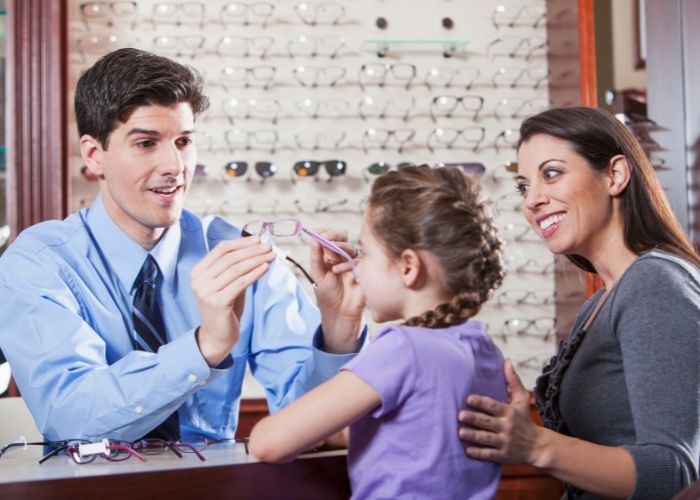A total of 761,157 children in Spain, 8.59% of the country’s minors, need glasses, contact lenses, or facial therapy. However, the economic situation of the family prevents them from buying the necessary equipment.
This is according to the report ‘Radiography of visual poverty in children in Spain’ by Visión y Vida, the Spanish public utility founded in 1955 with the aim of ensuring that citizens have good eyesight. One in three cases of school dropout is linked to vision problems, according to Visión y Vida.
Impact on development
The organisation stresses these untreated eyesight problems ‘can have an impact on the lives and development of the children affected’. They say, ‘not being able to see correctly has a direct relationship to their ability to study, develop and interact with others’.
Visión y Vida coordinator Elisenda Ibáñez called this situation ‘a problem of exclusion’. Because ‘visual poverty excludes, isolates, and reduces the future opportunities that a child who learns and develops can have. Therefore, priority should be given to the inclusion of these services in the primary care network and in community health systems’.
School dropout
Moreover, according to the report, one in three school drop-outs is linked to eyesight problems. And, furthermore, only three in ten children under seven have ever been to an eye specialist for a check-up. Moreover, in 72.8% of cases, it was the parents, teachers, or children themselves who discovered their visual problem.
In light of these figures, Visión y Vida president Salvador Alsina stressed the importance of health services ‘continuing to develop their capacity to meet the demand for mental health services, oral and dental care, and universal ophthalmology, prioritising their inclusion in the primary care network and in the community health systems closest to vulnerable populations’.
Regional disparities
During the presentation, Alsina also pointed out the differences between autonomous regions and cities. Ceuta is one of the regions with the highest rates of visual poverty (19.84%). This is followed by Extremadura (11.52%), Asturias (10.73%), Andalucia (10.56%) and Melilla (10.11%).
Regions that perform ‘better’ are the Basque Country (5.02%), Navarre (5.38%), Aragon (5.69%), Madrid (6.76%) and Castile and Leon (6.97%).
Growing urban child poverty
The report also points out that ‘while access to basic services may be more difficult in rural areas, child poverty is increasing in urban areas’. In total, more than one million children are affected in Spain. Visión y Vida proposes a coordinated plan for eye health that centres on raising awareness of the importance of eye health and regular check-ups; the possibility of making these check-ups ‘accessible to all’; and subsidies so the most vulnerable have access to the optical solutions they need, such as glasses or contact lenses.
€100 voucher
Therefore, the institution proposes a voucher of €100 to help the families concerned. The sum involved is approximately €76 million to put an end to visual poverty among children in Spain. ‘Our country cannot allow any case of visual poverty,’ said Alsina.
Moment is good
In this sense, Ibáñez stated that now is a good time to ‘take a step forward with the help of national and European funds’, and gave examples of similar initiatives, ‘such as the Italian ‘Bonus Vista’ or the agreement of the Valencia City Council’.
Visión y Vida ‘has been explaining since the beginning of the covid-19 pandemic how cases of visual poverty arise among the 20.7% of the population living below the poverty line (27.4% on average in the case of minors, one of the highest figures in Europe)’.
‘We have succeeded, with the different European funds, in filling many gaps and planning new initiatives in Spain. Therefore, now it is time for the visual health of children’, concluded Alsina.


